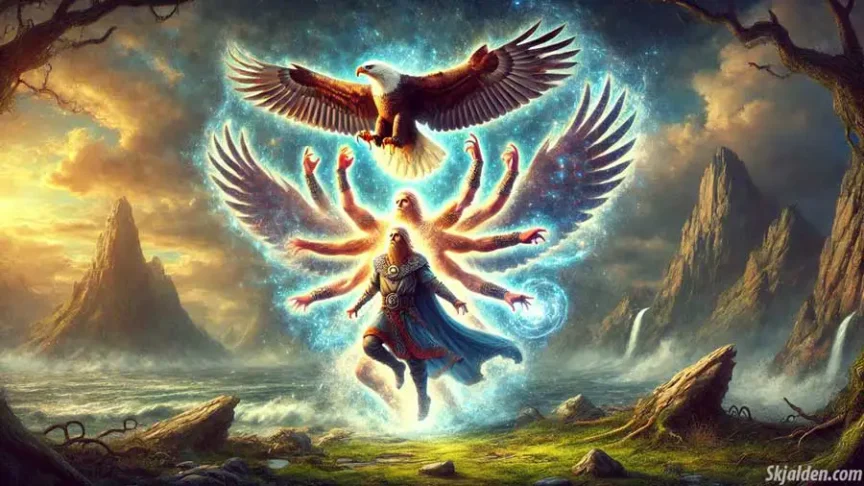In Norse mythology, a person’s soul is not a singular entity but a collection of several parts, each with a distinct purpose. One crucial component is the Hamr, primarily known as the shape or form of someone’s physical appearance. However, its significance extends far beyond mere looks; it encompasses the extraordinary ability to change form.
The term Hamr, deriving from the Old Norse words for “skin” or “shape,” highlights its role in myths where gods, mystical beings, and even some humans possess the power to transform themselves. This capability is not exclusive to divine entities but is a trait shared across a range of mythological characters, enriching the stories with magic and mystery.
Understanding Hamr
Every being in Norse mythology inherently possesses a Hamr as part of their soul. It represents their physical appearance and is deeply tied to their spiritual identity. Although all beings have a Hamr, its strength and control can vary greatly. Gods and mythical creatures often display more potent Hamrs naturally, allowing for frequent and dramatic transformations.
Training and Enhancement
Individuals can enhance their Hamr through training and specific rituals. Practitioners of Seidr, for example, refine their abilities to manipulate their shape to achieve spiritual ends. Such practices highlight the Hamr’s role in navigating both physical and spiritual challenges. Moreover, consuming magical substances can temporarily boost these abilities, as seen in the Saga of the Volsungs.
Transition to Shape-shifting in Sagas
Now, turning to shape-shifting in the sagas, this ability is common among gods and mystical beings. Odin, for example, often transforms into an eagle. He uses this form to fly swiftly across vast distances or gather crucial information discreetly. Similarly, Loki uses his shape-shifting skill to escape peril. In a famous escape, he turns into a salmon, slipping away from capture by the other gods.
The Saga of the Volsungs narrates how Sigurd gains the ability to understand birds after tasting dragon blood. Although not a physical transformation, this skill changes how he interacts with the world, showcasing the broader implications of mythical abilities.
Skadi, a giantess, also uses her Hamr to take on various forms. She transforms to avoid capture in the mountains, using her ability strategically for survival.
Significance of Shape-shifting
These transformations are not merely magical tricks. They provide gods and heroes with unique solutions to challenges they face in their human forms. Shape-shifting represents profound adaptability and mastery over both physical and metaphysical realms. For seidr practitioners, it serves as a method to bridge the mundane and the divine, offering a profound understanding of the universe’s layered nature.
In tales of the gods, such as in the Poetic Edda, Odin’s strategic transformations, like becoming a snake to steal the mead of poetry, underscore shape-shifting as a critical tool for acquiring knowledge and enforcing divine will. Loki’s transformation into a mare and the birth of Sleipnir, Odin’s eight-legged horse, further illustrate the fluidity of identity in Norse cosmology.
These narratives highlight that shape-shifting in Norse mythology is a multifaceted symbol, embodying survival, intelligence, cunning, and transcendence. By changing their Hamr, figures in these myths manipulate their fate and redefine their roles within their worlds.
